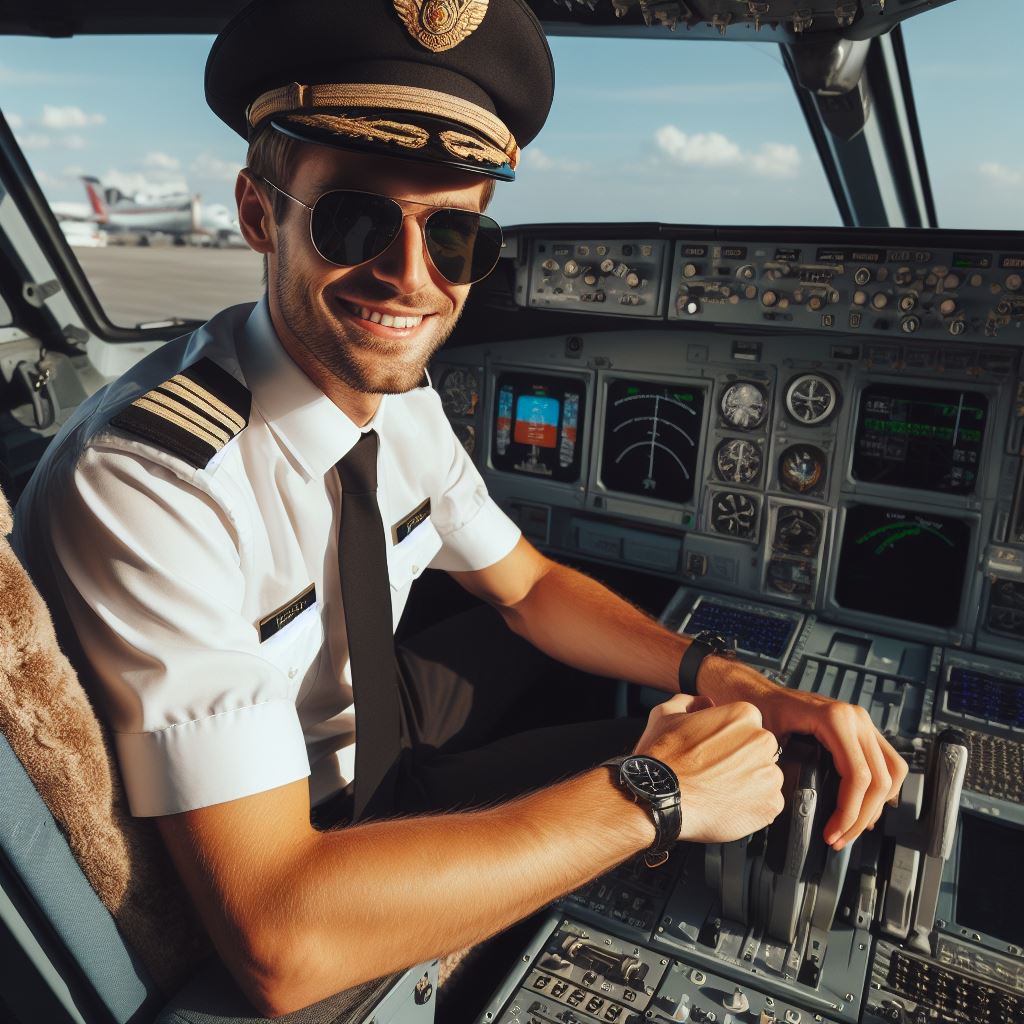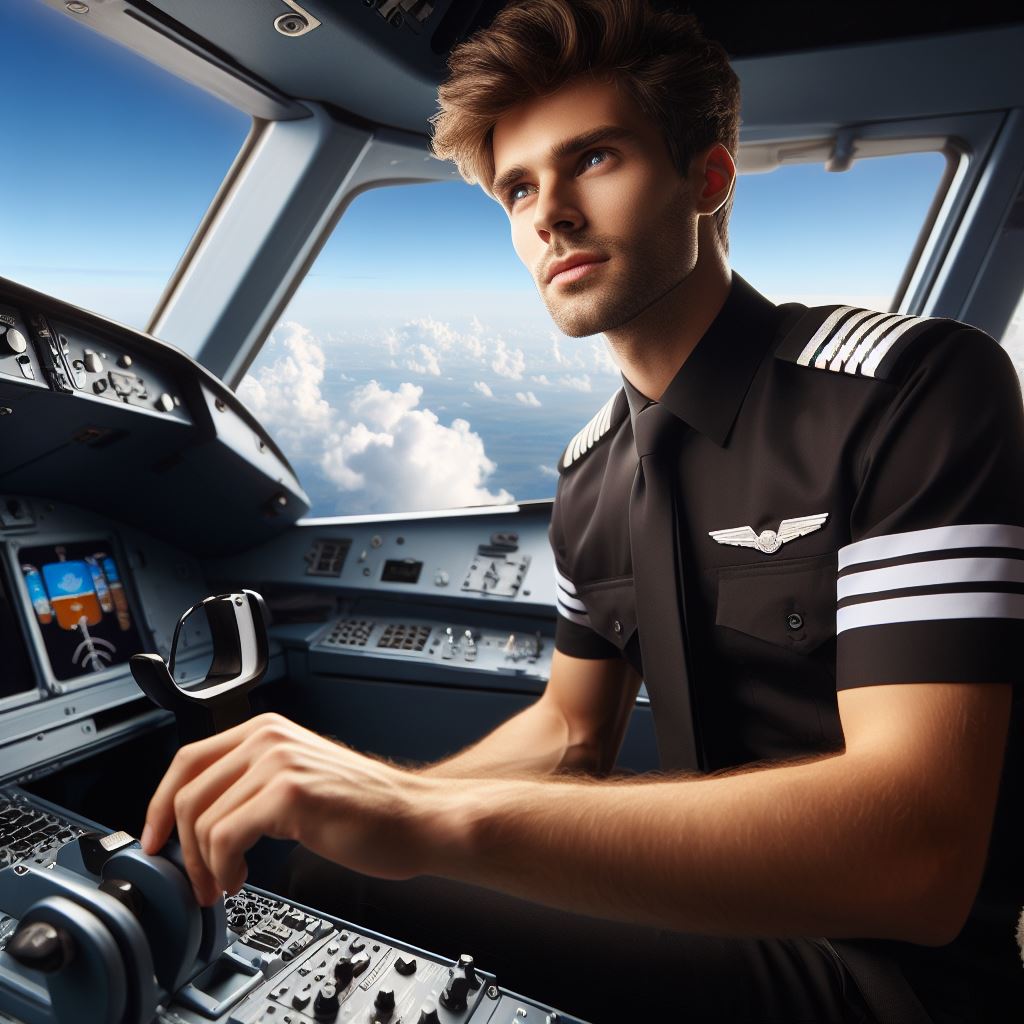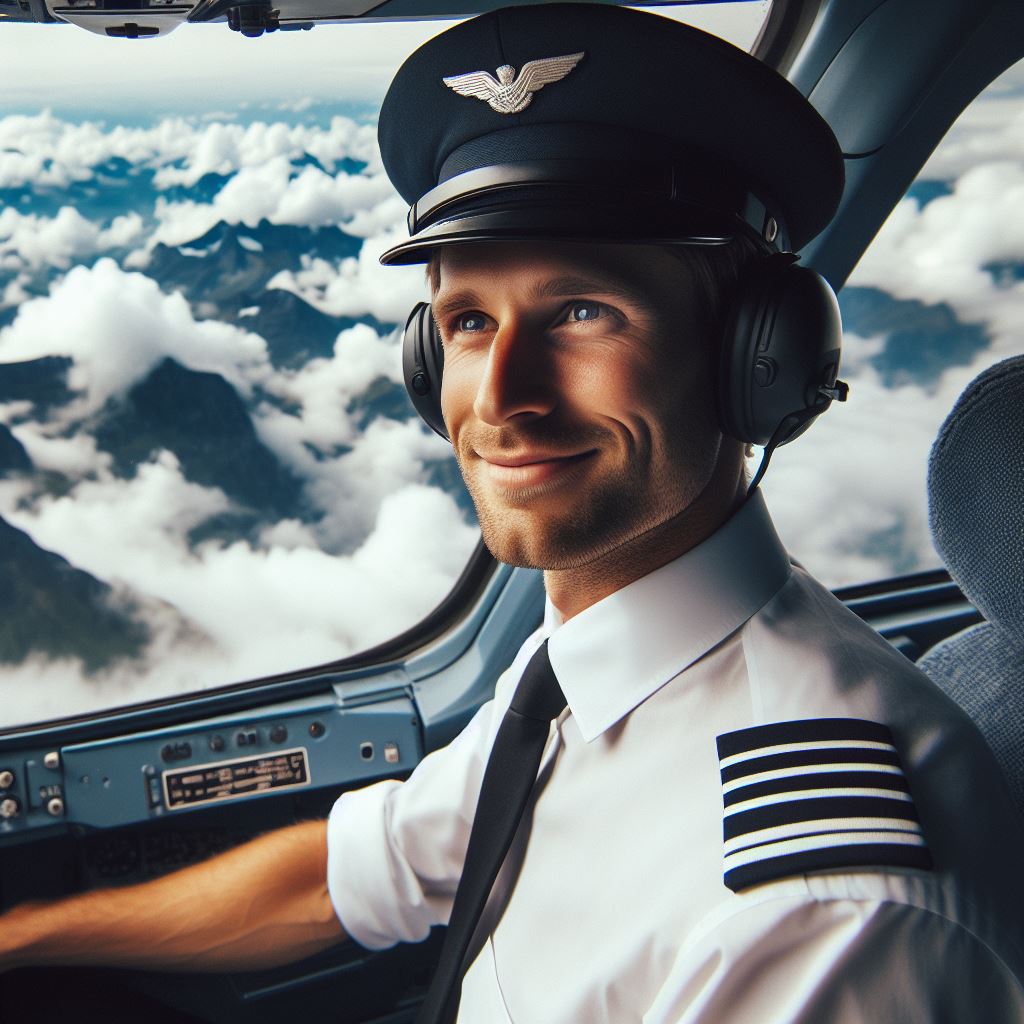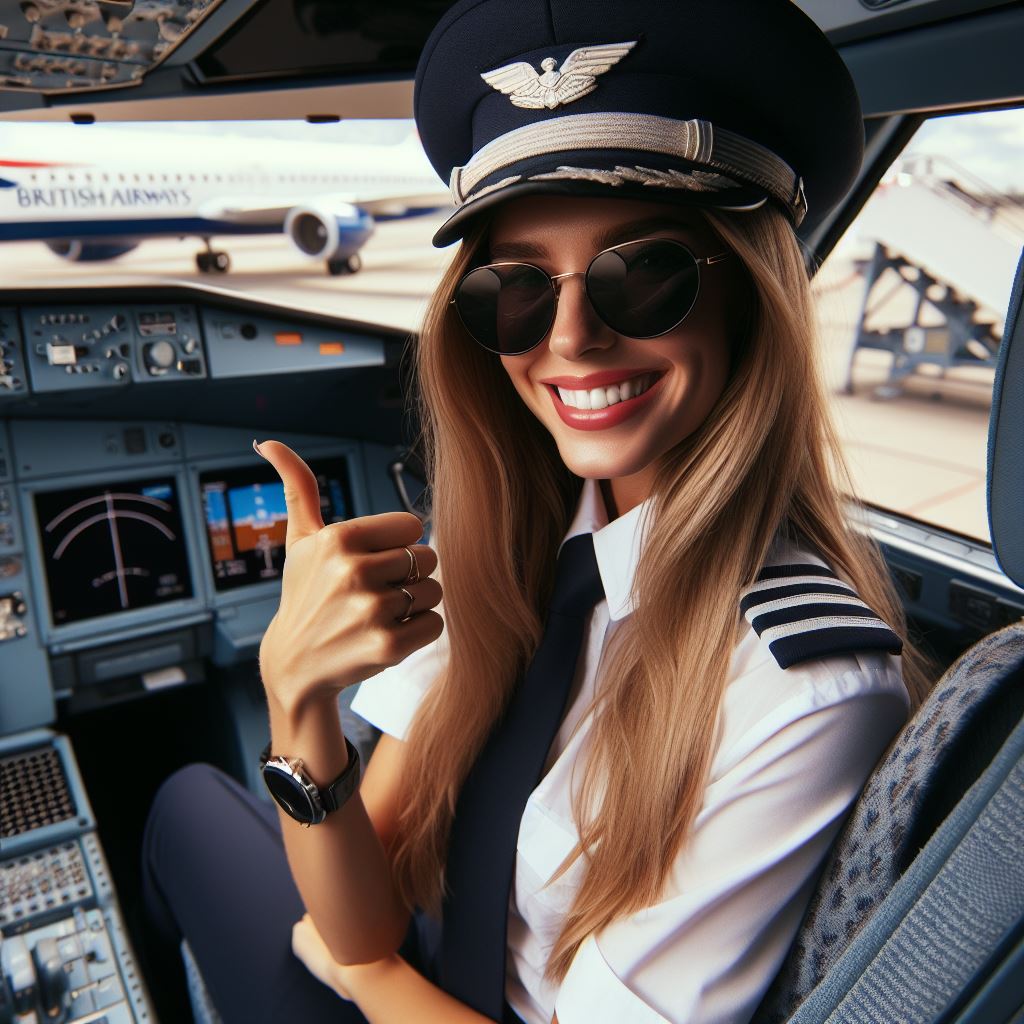Introduction
In the world of aviation, pilot licenses play a crucial role, ensuring safety and competence.
In the United Kingdom, there are various types of licenses that pilots can obtain.
These licenses are categorized based on the type of aircraft and flight operations they are qualified to handle.
Firstly, we have the Private Pilot License (PPL), which allows individuals to fly for leisure and non-commercial purposes.
With a PPL, pilots can operate single-engine aircraft during daylight and favorable weather conditions.
Next, there is the Commercial Pilot License (CPL), which permits pilots to fly for compensation or hire.
CPL holders can operate larger aircraft and conduct flights for various purposes like aerial photography, charter flights, and air ambulance services.
Additionally, there are specialized licenses such as the Airline Transport Pilot License (ATPL) and Multi-Crew Pilot License (MPL).
An ATPL holder is qualified to serve as a pilot-in-command in commercial airlines, while an MPL focuses on training pilots for multi-crew operations, usually in the airline industry.
Obtaining a pilot license requires meeting specific requirements. These typically include a minimum age limit, medical fitness, a certain number of flight hours, theoretical knowledge, and practical flight training.
The process also involves written exams, flight assessments, and proficiency checks.
Ultimately, pilot licenses are essential to ensure the competency and safety of pilots in the UK.
Understanding the different types and requirements is crucial for aspiring pilots to pursue their aviation careers and contribute to the industry’s growth and development.
Private Pilot License (PPL)
What a PPL is
A Private Pilot License (PPL) is a type of pilot license that allows individuals to fly aircraft for personal purposes and non-commercial activities.
It is the most common type of pilot license among aviation enthusiasts.
Personalized UK Career Consulting
Receive tailored career guidance designed just for you. Get actionable steps and expert support to boost your career in 1-3 days. Take control of your career now.
Get StartedThe minimum age requirement for obtaining a PPL
To obtain a PPL, individuals must be at least 17 years old.
This age requirement is set by aviation regulatory authorities to ensure a certain level of maturity and responsibility.
The medical requirements for a PPL
Individuals applying for a PPL must meet specific medical requirements.
They must hold a valid medical certificate, usually issued by an aviation medical examiner.
The medical exam ensures that the pilot is physically fit to operate an aircraft.
The theoretical knowledge and flight training required for a PPL
To obtain a PPL, aspiring pilots must undergo both theoretical knowledge and flight training.
The theoretical knowledge includes subjects like air law, meteorology, navigation, and aircraft systems.
Flight training involves hands-on experience under the guidance of a certified flight instructor.
Additional requirements or restrictions for PPL holders
In addition to the age and medical requirements, PPL holders must maintain their proficiency by completing regular flight reviews and staying updated with aviation regulations.
They are also restricted from operating aircraft for commercial purposes.
The privileges and limitations of holding a PPL
Holders of a PPL have several privileges, including the ability to fly aircraft for personal purposes, take passengers on board, and enjoy recreational flying.
However, they have certain limitations, such as not being allowed to fly for hire or compensation and not being authorized to conduct flights in adverse weather conditions without additional training and certifications.
In short, a Private Pilot License (PPL) allows individuals to fly aircraft for personal purposes.
To obtain a PPL, individuals must meet the minimum age requirement of 17 and pass the necessary medical examinations.
Your Dream Job Starts with a Perfect CV
Get a tailored CV and cover letter that captures your unique strengths and stands out in your industry. Let us help you make an unforgettable first impression.
Get StartedThey also need to undergo theoretical knowledge and flight training.
PPL holders enjoy privileges like recreational flying and taking passengers on board, but they have limitations, such as not being able to fly for commercial purposes.
Regular proficiency maintenance is required to ensure safe and responsible flying.
Read: The Best Flight Schools Across the UK
Commercial Pilot License (CPL)
In the world of aviation, obtaining a Commercial Pilot License (CPL) is a significant milestone for aspiring pilots.
Let’s explore the requirements, privileges, and limitations associated with a CPL in the UK.
What a CPL is
A CPL is a license that enables pilots to fly aircraft for compensation or hire.
This means that CPL holders can perform commercial flights, such as transporting passengers or cargo, and get paid for their services.
The minimum age requirement for obtaining a CPL
To be eligible for a CPL in the UK, applicants must be at least 18 years old.
This ensures that candidates have a sufficient level of maturity and responsibility to operate aircraft professionally.
The medical requirements for a CPL
In addition to the age requirement, pilots seeking a CPL must meet specific medical standards.
The Civil Aviation Authority (CAA) sets these standards to ensure that pilots are physically fit to perform their duties without endangering themselves or others.
The theoretical knowledge and flight training required for a CPL
The road to obtaining a CPL involves both theoretical knowledge and flight training.
Candidates must pass a set of theoretical knowledge exams that cover subjects like aviation law, meteorology, navigation, and aircraft systems.
Optimize Your LinkedIn for Success
Boost your LinkedIn profile with a professional bio, keyword-rich headline, and strategic recommendations that attract recruiters. Stand out from the crowd and get noticed.
Optimize NowThis knowledge is essential for safe and competent flight operations.
The flight experience requirements for a CPL
In terms of flight experience, aspiring CPL holders must log a minimum of 200 hours of flight time.
Of those, 100 hours must be performed as the pilot-in-command, where the individual is solely responsible for the aircraft’s operation and safety.
Additional requirements or restrictions for CPL holders
In addition to the flight time requirement, CPL candidates must also pass a skill test to demonstrate their competency in flying.
Furthermore, they may need to obtain specific instrument ratings to operate in certain weather conditions or airspace.
The privileges and limitations of holding a CPL
It is worth noting that CPL holders have certain privileges and limitations.
They can act as pilot-in-command or co-pilot on commercial flights, but they must comply with any additional requirements or restrictions imposed by the CAA or other governing bodies.
In fact, a Commercial Pilot License (CPL) is a crucial step for pilots aspiring to fly for compensation or hire.
Meeting the minimum age requirement, fulfilling medical standards, acquiring theoretical knowledge, accumulating flight experience, and obtaining any necessary ratings are all part of the journey towards a CPL.
With a CPL, pilots can enjoy the privileges of commercial flying while adhering to the responsibilities and limitations that come with it.
Read: Pilot Salary Trends in the UK for 2024
Airline Transport Pilot License (ATPL)
What an ATPL is
An Airline Transport Pilot License (ATPL) is the highest level of pilot certification authorized by the aviation regulatory bodies.
It allows pilots to operate as captains on large commercial aircraft.
The minimum age requirement for obtaining an ATPL
To obtain an ATPL, the minimum age requirement varies depending on the country. In the United Kingdom, the minimum age is 21 years old.
The medical requirements for an ATPL
Pilots obtaining an ATPL must meet specific medical requirements to ensure they are physically fit to safely operate commercial aircraft.
These requirements are determined by aviation authorities and may include regular health examinations.
The theoretical knowledge and flight training required for an ATPL
To acquire an ATPL, pilots must undergo extensive theoretical training and flight training.
The theoretical knowledge covers various subjects such as navigation, meteorology, aircraft systems, and air law. Flight training includes flight hours on different aircraft types.
The flight experience requirements for an ATPL
The flight experience requirements for an ATPL are high.
Pilots need to accumulate a certain number of flight hours, usually between 1500 and 2000 hours, before they can apply for an ATPL.
These hours may include both single and multi-engine aircraft.
Additional requirements or restrictions for ATPL holders
In addition to the basic requirements, ATPL holders may have to comply with specific regulations, such as recurrent training and flight checks, to keep their license valid.
They must also adhere to strict aviation safety protocols and regulations.
The privileges and limitations of holding an ATPL
Holding an ATPL comes with significant privileges, including the ability to act as the captain of commercial aircraft and operate across national and international routes.
However, pilots with an ATPL also have additional responsibilities and are subject to increased scrutiny from aviation authorities.
ATPL holders have the privilege to fulfill their dreams of flying large commercial aircraft and leading a crew.
They are the ultimate decision-makers when it comes to aircraft operations and are responsible for the safety of passengers and crew.
However, ATPL holders also face certain limitations. They must maintain their skills through regular training and medical checks.
They are prone to increased stress and responsibility due to the demanding nature of their job.
Additionally, ATPL holders may be subject to long working hours and irregular schedules, as aviation operates around the clock.
In essence, the Airline Transport Pilot License (ATPL) is the pinnacle of pilot certification.
It requires pilots to meet stringent requirements in terms of age, medical fitness, theoretical knowledge, flight experience, and additional regulations.
Holding an ATPL grants pilots tremendous privileges but also entails added responsibilities and limitations.
Read: How to Become a Pilot in the UK: A Guide
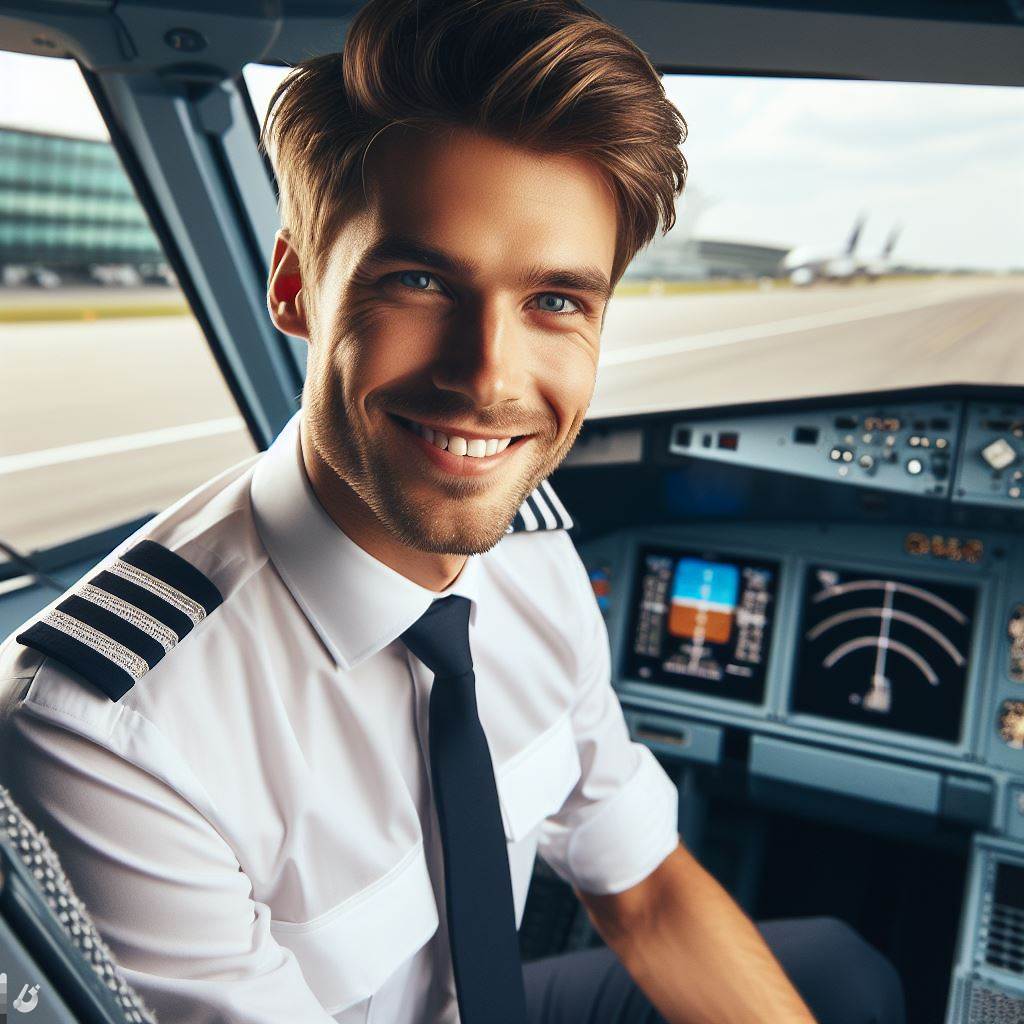
Conversion and Upgrading of Pilot Licenses
Converting a Foreign Pilot License to a UK License
To convert a foreign pilot license to a UK license, the following process needs to be followed:
- Verify eligibility: Ensure that the foreign license is valid and meets the criteria set by the Civil Aviation Authority (CAA) for conversion.
- Language proficiency: Demonstrate English language proficiency by meeting the standards specified by the International Civil Aviation Organization (ICAO).
- Application submission: Submit the completed application form along with the required documents to the CAA for review.
- Verification process: The CAA will review the application and conduct necessary checks to ensure the authenticity of the foreign license.
- Written exams: Depending on the type of foreign license, the CAA may require candidates to pass written exams in relevant subjects.
- Skill test: Undergo a practical skill test conducted by a CAA-approved Flight Examiner to evaluate flying abilities.
- Medical assessment: Obtain a UK Class 1 or Class 2 medical certificate from an approved Aeromedical Examiner.
- Background check: Provide details for a background check to ensure compliance with security requirements.
- Pay the necessary fees: Make the required payment for the conversion process.
- Issuance of UK license: Upon successful completion of all requirements, the CAA will issue the UK pilot license.
Upgrading a PPL to a CPL or ATPL
To upgrade a Private Pilot License (PPL) to a Commercial Pilot License (CPL) or Airline Transport Pilot License (ATPL), aspiring pilots must follow these requirements and processes:
- Meet minimum hours: Accumulate the required flight hours specified by the CAA for a CPL or ATPL upgrade.
- Theory exams: Successfully pass the theoretical knowledge exams, which vary depending on the desired license.
- Instrument Rating (IR) training: Obtain an IR rating, which allows pilots to fly in instrument meteorological conditions.
- Multi-engine rating: Complete additional flight training to obtain a multi-engine rating, if not already obtained.
- CPL skill test: Undergo a skill test conducted by a CAA-approved Flight Examiner to demonstrate competency in flying techniques.
- Frozen ATPL: For those aiming for an ATPL, achieve the Frozen ATPL status after completing the required flight hours, exams, and skill tests.
- Airline-specific requirements: Airline companies may have additional requirements for pilots aspiring to join their ranks.
- Obtain a medical certificate: Hold a valid Class 1 medical certificate issued by an approved Aeromedical Examiner.
- Background check: Provide necessary information for a background check, ensuring compliance with security requirements.
- Pay the necessary fees: Make the required payments related to the upgrade process.
- Issuance of upgraded license: After successfully fulfilling all requirements, the CAA will issue the upgraded pilot license.
Additional Requirements or Considerations for Conversions or Upgrades
Besides the main requirements mentioned above, there are additional considerations for license conversions or upgrades:
- Recency of experience: Pilots must demonstrate recent flying experience to meet the currency requirements specified by the CAA.
- Training credits: Depending on prior training and experience, candidates may receive credits that can be applied towards meeting the conversion or upgrade requirements.
- Regulatory differences: Pilots who hold foreign licenses should be aware of any regulatory differences between their previous license and the UK license.
- Visa requirements: Non-UK citizens may have to fulfill specific visa requirements to convert their license or undergo training in the UK.
- Time and cost: Conversions and upgrades require significant time and financial investments for training, exams, tests, and other related processes.
Understanding the process and requirements for converting or upgrading pilot licenses in the UK is crucial for aspiring pilots to pursue their aviation careers effectively.
Read: A Day in the Life of a UK Airline Pilot
Conclusion
In this blog post, we explored the different types of UK pilot licenses and their requirements.
Uncover various UK pilot licenses—Private, Commercial, ATPL. Understand specific requirements for each.
It is vital to grasp license nuances. Navigating regulations ensures a smooth path to aviation success.
It is crucial to understand these licenses and their requirements to pursue a career in aviation.
A thorough understanding of UK pilot licenses is pivotal for aspiring aviators. Explore resources to stay informed and pave your way into the skies.
For further information, readers can explore the Civil Aviation Authority (CAA) website or consult a flight training school.
[E-Book for Sale]
500 Cutting-Edge Tech Startup Ideas for 2024 & 2025: Innovate, Create, Dominate
$19.99 • 500 Tech Startup Ideas • 62 pages
You will get inspired with 500 innovative tech startup ideas for 2024 and 2025, complete with concise descriptions to help you kickstart your entrepreneurial journey in AI, Blockchain, IoT, Fintech, and AR/VR.

